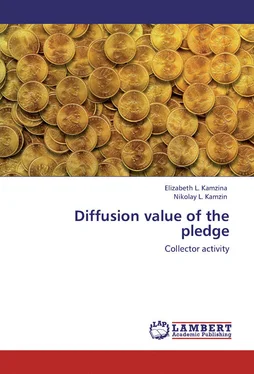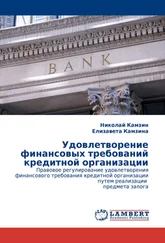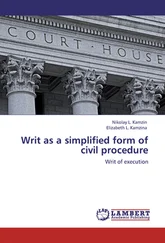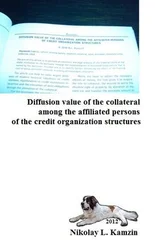The essential results of the study may also include the following:
– Define the concept of bail in civil law from the perspective of social value;
– Investigated the psychological aspects of the legal characteristics of the collateral relations;
– Analyzed the institutional ownership of collateral relationship, the specificity of civil regulation;
– The content of the credit agreement secured by a pledge;
– Investigated the types and reasons of financial claims of credit institutions to the participants of legal mortgage and third parties;
– Studied theoretical concepts and practical procedures for implementing the activities of the collateral.
The practical significance of the results of the study. Performed in the framework of the analysis allowed the construction of a unified picture of the implementation procedure of the collateral to repay the debt to the lending institution. The dynamic structure provides insight into the key points of the procedure, allowing a significant effect on its socio-economic results, which is important for the borrower in particular and society in general, significant financial result for the Bank, its affiliates and their employees.
Testing results. The main results of the author in the scientific and practical article, “Sputtering value of the collateral of the credit institution affiliated entities”, prepared for publication in the Journal of SSEU (№ 5 (67) 2010) and applied in practice in auditing procedures for the implementation of collateral credit the organization.
In the text of the study includes a list of references containing 86 items.
Chapter 1
Collateral relationship: concept, features, peculiarities of legal regulation
1.1.The concept of bail in civil law
By mortgage lender on the secured obligation is entitled in the event of default by the debtor of the obligation to obtain satisfaction from the value of the mortgaged property prior to other creditors of the person who owns the property, with the exceptions established by law (par. 1, art. 334 Civil Code). Pledge performs security functions, determines how the principle of preferential position of the pledge in relation to other creditors and the principle of following the right mortgage for a foreclosure sale [3] Рассказова Н.Ю. Залог движимого имущества // Меры обеспечения и меры ответственности в гражданском праве: сборник статей / рук. авт. кол. и отв. ред. М.А. Рожкова. М.: Статут, 2010. С. 8.
.
The pledge is known since Roman law that called for three main types of collateral [4] Кемпл Б. Практика применения права судами Кыргызской Республики. Сб. лекций: В 2 т.: Том I. – «Premier LTD», 2006. С. 156.
:
– General mortgage (pledge of all assets in general);
– Hand-held mortgages (transfer possession of the things the lender the right to use without obligation to include in the backup);
– To send things to the creditor, with the proviso that, if debtor has defaulted, the thing goes into foreclosure, regardless of the size of the debt and value of the mortgaged property.
Providing a guarantee provided by borrowing a sum of money to provide opportunities to meet the priority requirements of the mortgagee of the property value of the mortgaged property and proprietary rights restrictions – on the order laid down by the mortgagor [5] Кузнецов С.А. Судебные обеспечительные средства в российском гражданском праве. – М.: Волтерс Клувер, 2008. С. 79.
.
As a general rule collateral arises under the contract (par. 3 art. 334 Civil Code). The contract shall be in writing (par. 1 art. 339 Civil Code). The security deposit can be transferred to any property, including property rights and things, with some exceptions (art 336 Civil Code) [6] Лермонтов Ю.М. Договоры – бухгалтерские и налоговые последствия. Велби ТК. 2010. С. 198.
.
Owing to the nature of collateral relations, funds cannot be pledged [7] Золотько Н.В. Некоторые проблемы залога имущественных прав // Вестник Федерального Арбитражного суда Северо-Кавказского округа. № 3. 2006.
. The pledge may be both the debtor and the third person. To pledge things necessary to the mortgagor was entitled to its ownership or the right of economic management. The pledge of property right may be the person to whom the pledged right belongs (art 335 Civil Code). The right of pledge arises from the conclusion of the pledge agreement. If the property must be transferred to the pledge, the pledge right there at the time of transfer of the thing. May otherwise be provided in the contract (art 341 Civil Code).
The main drawback is the inability of collateral circulation in the foreclosure of the collateral. In case of failure of the principal obligation the creditor is forced to sell the mortgaged property itself and meet its requirements only obtained from its value [8] Паленов Д.А. Залоговые правоотношения с учетом нового нормативно-правового регулирования // Регламентация банковских операций. Документы и комментарии. № 4. 2009.
. If there is a dispute between the pledge and the pledge the initial selling price of collateral established by the court on the basis of market price of the property [9] Постановление ФАС Поволжского округа от 03.03.2010 по делу № А55-16293/2008 // СПС Гарант.
. In practice, the party concerned shall evaluate the property. Based on the results, as reflected in the report, agree with the other party selling price of the collateral.
The pledged property in its entirety provides the pledge’s claim, including interest, penalty, damages caused by delay in performance [10] Раев К.В. Обращение взыскания на предмет залога // Имущественные отношения в Российской Федерации. № 5. 2009.
. In addition, the cost of the mortgaged property is reimbursement of the mortgagee for the maintenance of things as well as the costs of foreclosure. May otherwise be provided in the contract (art 337 Civil Code).
The essential conditions required for contracts of this kind, without a contract will be deemed not concluded (art. 432 Civil Code) are:
– Information on the property, pledge, and its evaluation (par 1. art. 339 Civil Code). The contract of pledge must contain information enabling identification of the pledge the property. The language defining the collateral, such as “cars and other vehicles owned by the borrower” is not possible to determine the estate passed to collateral that is taken into account by the court [11] Определение ВАС РФ от 12.04.2010 по делу № ВАС-3332/10; Определение ВАС РФ от 12.04.2010 по делу № ВАС-3336/10; Определение ВАС РФ от 13.05.2010 по делу № ВАС-5585/10; Определение ВАС РФ от 13.05.2010 по делу № ВАС-5718/10; Определение ВАС РФ от 28.06.2010 по делу № ВАС-8174/10 // СПС Гарант.
;
– A condition on the size and duration of the obligation secured by the pledge (par. 1 art. 339 Civil Code). This condition is considered to be consistent if the agreement of the pledge is an allusion to the contract governing the principal obligation of the debtor [12] Постановление Пленума Верховного Суда РФ № 6, Пленума ВАС РФ № 8 от 01.07.1996 «О некоторых вопросах, связанных с применением части первой Гражданского кодекса Российской Федерации» // Российская газета. № 151. 10.08.1996.
;
Читать дальше












